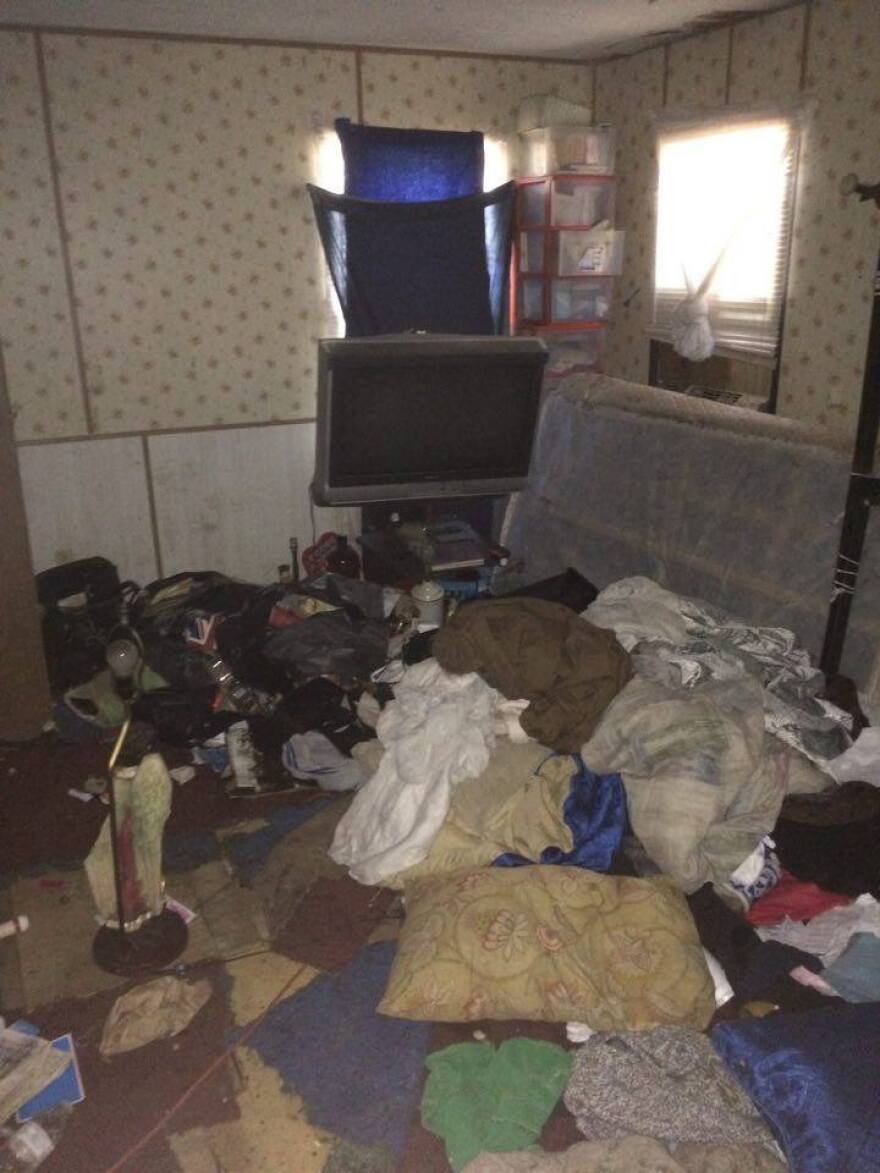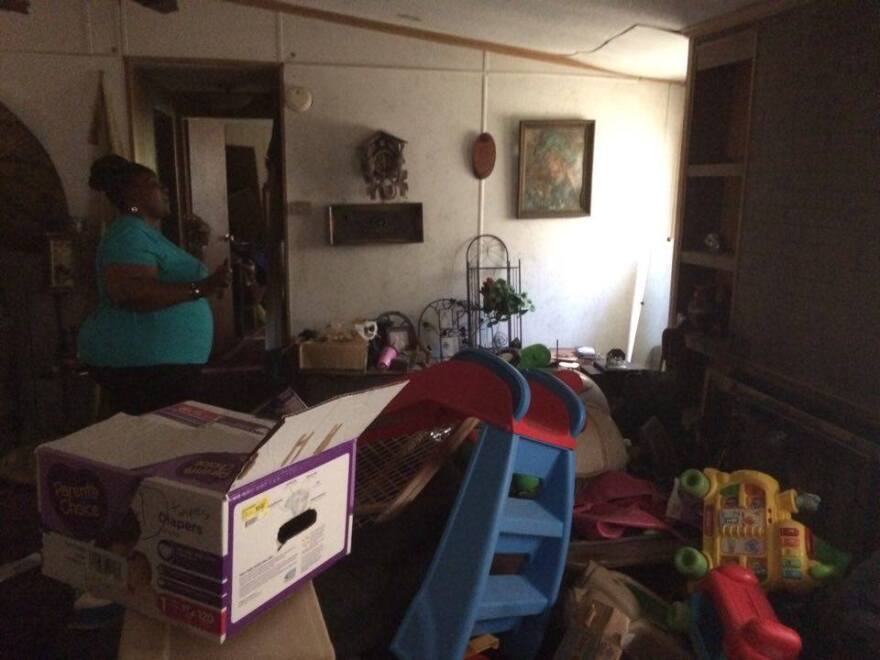In early February, the US Department of Housing and Urban Development (HUD)awarded South Carolina $157 million in disaster recovery funds. Lexington County got $16.3 million or about a tenth of those funds. Seven months later, a longtime Lexington resident wonders when she'll be able to apply a slice of that funding and what it might look like. Cooper McKim has the story.

In a trailer park just south of Columbia, 45-year old Stacy Massard doesn't look happy to revisit her old home. A bead of sweat falls from her head as she struggles to unlock the front door. She walks in and sighs over the mountain of stuff spread across each room. The kitchen: a bundle of PediaSure bottles covered with several layers of dust. The living room: a baby's play area full of old clothes since invaded by mold. Massard says "all the stuff is piled up to get out of here, and I almost got out the door, but I can't make it out the door."
When October's flood hit the Midlands, water rose up to just under the floor of Massard's trailer. The storm continued with strong winds, forcing multiple branches to fall on her roof creating holes where rain collected. Every surface in the home is waterlogged. She says "water is still in the ceiling and the insulation. I could just poke a hole and the water would flow down." A week after the flood, Massard moved into a nearby apartment with her four-year-old son and husband.

Since the flood, Massard has struggled to get back on her feet. Several organizations have helped her, but it's only covered partial costs like the electric bill. Now, she's stuck with two rents to pay, a failing car, and a child to support. Recently, she's been falling behind on her bills -- something she says has never happened before. "I came home and my cable was cut off. Thank God my lights are still on, but I always have to get an extension on that," Massard says.
Ten months since the flood, Massard is tired of recovering. She just wants to settle down in a new home. To her, there's one last frontier: the possibility of federal funding. She says "I am a person who do not like to ask for anything, I'm very prideful. But I really need the help now. I just want a new home, where I can call home, where my son can call it home and not a rental."
HUD allocated $16.3 million of disaster recovery funding to Lexington County six months ago, but that money didn’t just show up in the County's treasury. The Director of Community Development for Lexington, Charles Garren, says there are a few hurdles to cross before anyone can even apply for funding. He says, "We anticipate that we probably won't see any money until mid-November to even early December."
"How do you eat an elephant? One bite at a time. Well how do you recover from a flood? One step at a time."
First, Garren says he needs to submit a finished action plan to HUD, laying out exactly how the money will be used and managed. They already have a concept in place. Garren explains "the bulk of our funds as we're thinking now will be towards home buy-outs or home rehabs and those will be individual awards to eligible persons."

With destroyed bridges, unusable roads, infrastructure issues, and displaced families, Garren says it would take nearly a hundred million dollars for a full recovery. But with just a fraction of that available, Garren says a focus on individual needs would have the greatest impact -- specifically for families that qualify as low-to-moderate income (LMI).
With so much damage throughout the county, Garren says he expects thousands of applicants with perhaps only hundreds qualifying as eligible. For those who do, the money will cover more than just the phone bill. He says, "If they have a hundred thousand dollars’ worth of unmet need then we can address a hundred thousand dollars."
"Water is still in the ceiling and the insulation. I could just poke a hole and the water would flow down."
For someone like Massard who wants to reset, a home buy-out or full rehab would be perfect. "I'm praying that they say that I fit in that gap and they give me that hope back that I need in my life. I'm ready to move into something that is mine," she says.
With so many applicants expected, Garren warns that not everyone will get funding, but "I will encourage people, don't just assume that you're not going to get anything. Go through the process," he says. Adding, if you don't ask, no help will come.
Applications will likely open mid-October, he says, with funds to come online around December.



